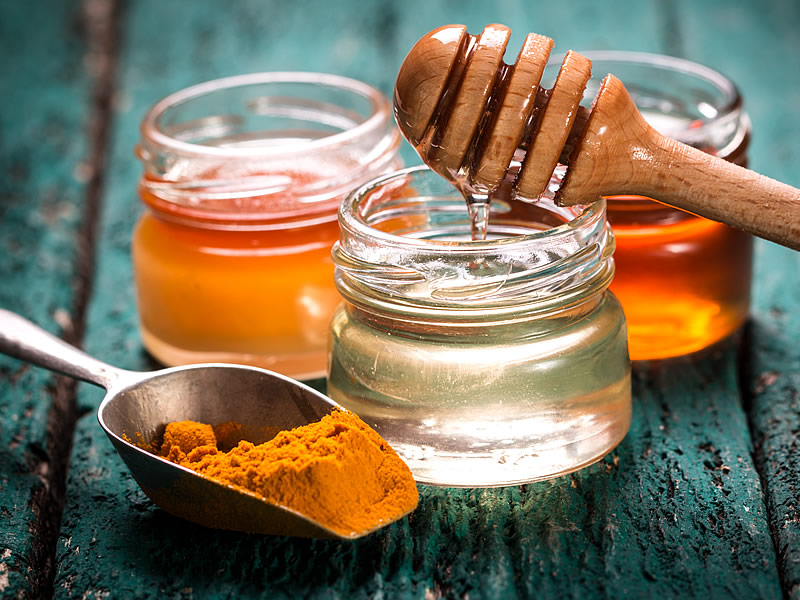“Apiculture is the science and art of prolonging, sustaining, and retaining health by using products obtained from honeybee hives, such as honey, beebread, bee venom, bee pollen, propolis, and royal jelly”.
Current years have perceived the use of bee products in both outdated and modern treatments. Now, many research works are directed to exploring the health benefits and biological properties of bee products due to their effectiveness which promotes the progress of nutraceuticals and functional food production from these products. The perception of functional food denotes food that has the capability to endorse better physiological or psychological health as compared to outdated therapies and nutritional food. These properties certainly added toward exceptional health maintenance, well-being, and reduced prolonged illness.
The current evaluation emphasizes on the possible health benefits of bee products, including honey, propolis, and royal jelly.
Here are denoting the use of honey in different body ailments.
1)Wound Management:
Honey has conventionally been used to cure injuries, pest bites, blisters, skin ailments, abscesses, and ulcers. The healing property of honey is largely due to its antimicrobial activity, that maintain a damp condition and high viscosity provide a protective barrier to prevent the infection (Manisha and Shyamapada, 2011; Hananeh et al., 2015). Scientific & technical credentials of the healing competences of honey confirms its worth and an antibacterial agent.
- a) Mechanism of wound healing:
Honey stimulates the initiation of inactive plasminogen in the wound medium, which results in the activation of the proteolysis. This enzyme breakdowns fibrin clots that bind with dead tissues in the wound matrix.
Scientific proof supporting the efficiency, specificity, and sensitivity of honey in wound repair specifies that the use of traditional and new wound care dressing is less effective to that of using honey.
Some circumstances have revealed that honey also excites wound-healing properties even in injuries infected with antibiotic-resistance bacteria (Natarajan et al. 2001).
2) Pediatric Care:
Honey can be helpful in treating skin problems in children. It recovers skin damages near various operations like ileostomy and colostomy in which stomas are created, honey clears and heals skin problems near stoma by increasing epithelialization of the injured skin. Honey has a useful consequence on pediatric inflammation of the skin, which is due to too much use of napkins and diapers, eczema, and psoriasis.
The influence of honey combined with beeswax and olive oil was examined on patients with psoriasis or atopic dermatitis. A clinical trial disclosed that a combination comprising honey was exceptionally well tolerated and produced significant improvements as honey comprises many nitric oxide metabolites, which decrease the risk of skin infection in psoriasis.
3) Diabetic Foot Ulcer (DFU):
Honey is a cost-effective remedy for diabetic foot ulcers (DFU). Diabetic Foot Ulcer has the symptoms of ache, swelling, and inflammation. Analysis indicated that using honey for the management of ulcers resulted in positive consequences with great approval rates from the patients. Honey is used in lesions healing and is effective in locally infected injuries, DFU, Charcot foot ulcerations, and multifaceted comorbid illnesses that have failed hospital therapy. Honey causes excellent acceptability and negligible disturbance to the wound matrix.
4) Gastrointestinal (GI) Disorder:
Natural honey contains various forms of enzymes which help in the absorption of many molecules such as glucose and starch. The sugar molecules of honey are easily taken by the body. Honey also delivers certain essential molecules, such as minerals, phytochemicals, and flavonoids that support digestive functions.
Pure honey has bactericidal properties and also comprises of the high amount of prebiotics which helps in increasing the biological activities and development of Bifidobacteria found in the GIT.
Some in vitro and in vivo experiments on honey have described it as an important dietary supplement that accelerates the growth of Lactobacillus and Bifidobacteria and enhanced their probiotic strength in the gastrointestinal tract.
Under in v40 itro circumstances, prebiotic elements in honey for example inulin, oligofructose, and oligosaccharides helped the increase in the numbers of Lactobacillus acidophilus and L. Plantarum by 10–100 folds, which was beneficial for the intestinal microbiota.
5) Oral Health:
Honey is beneficial for the management of various oral ailments such as periodontal infection Inflammation of mucous membranes in the mouth, and halitosis (halitosis is an oral health condition that causes malodorous breath). Moreover, it is useful for the prevention of dental plaque, gingivitis, mouth ulcers, and periodontitis. The antimicrobial and anti-inflammatory abilities of honey can stimulate the growth of granulation tissue, leading to the repair of damaged cells.
- Mechanism of action:
A latest study has evaluated that honey intake improves halitosis due to its strong antimicrobial activity due to its methylglyoxal component.
6) Pharyngitis and Coughs:
Sore throat, term commonly used for pharyngitis, which is an acute infection caused by Streptococcus spp. Honey is very effective for curing sore throat with its anti-inflammatory, antiviral, and antifungal properties.
- Mechanism of action:
Honey makes a layer onto the inner lining of the throat and destroys the dangerous microorganisms by concurrently calming the throat. A review has confirmed that honey is more effective in treating cough as compared to other treatments caused by upper respiratory infections, counting dextromethorphan and diphenhydramine. The antioxidant and antibacterial effectiveness of honey helped in reducing obstinate cough and improved sleep for both children and adults by taking
honey (2.5 ml). A relative study on children with different natural products stated that honey was found to be the extensively used therapy for pneumonia 82.4%.
7) Gastro-oesophageal Reflux Disease:
Gastroesophageal reflux disease (GERD) is a gastrointestinal tract disorder that happens when acid juices from the gastric, or food and liquids are reversed from the gastric into the esophagus. Symptoms of GERD contain indigestion, soreness, and acid vomiting. By taking the honey, helps in treating this condition by making a protective layer on esophagus and stomach mucosal lining and stop the reverse flow of food and stomach juices. Honey also stimulates the tissues of the sphincter to support their reproduction, thus decreasing the risks of acid reflux.
8) Dyspepsia, Gastritis, and Peptic Ulcer:
Dyspepsia, also known as indigestion, denotes to distress or pain that happens in the upper stomach, frequently after eating or drinking. Symptoms of this conditions include epigastric pain, indigestion, distending, and sickness. Dyspepsia is the initial sign of peptic ulcer which might ultimately leads to cancer.
Gastritis denotes to the inflammation of the lining wall of the gastric.
Peptic ulcer indicates destructions or painful abscesses on the lining of the gastric or duodenum.
Honey have been recognised as a powerful inhibitor for gastritis and the peptic ulcer causing agent that is Helicobacter pylori (H. pylori).
Clinical reviews have revealed that honey reduced the production of gastric acid and amplified the healing effect. Honey is also taken as nutritional supplement for its antimicrobial properties and healing effect.
9) Gastroenteritis:
Gastroenteritis is a very common condition that causes diarrhea and vomiting. Causative agents of this condition include Salmonella, Shigella, and Clostridium. A clinical analysis described the treatment of infant gastroenteritis by using honey, in which glucose in standard ORS solution replaced with honey that resulted in hydration and balancing of electrolytes in the body due to high sugar content in honey causes water reabsorption.
10) Constipation and diarrhea:
Severe constipation is a common and miscellaneous type disease categorised by unbearable evacuation (irregular stools and difficult stool passage). Symptoms include injuring, difficult to eject stool, incomplete removal of stools, hard or unsmooth stools, and lengthy time to pass stool.
Diarrhea is refer to as a high incidence of bowel actions with watery stool.
Honey has decreased the incidence of infection and duration of viral diarrhea as compared to conventional antiviral therapy. In a different case, people detected with inflammatory bowel syndrome (IBS) suffering severe diarrhea or constipation, distending, and stomach discomfort was effectively treated with raw honey on an unfilled stomach.
11) Liver and Pancreatic Diseases.
Honey aids to calm pain, regulate liver functions, and deactivate contaminants. Problems in the liver functions can be caused to oxidative destruction.
Honey shows anti-oxidative properties produce protective effect on the injured liver. A study on paracetamol-induced liver damage disclosed that the antioxidant and liver-protective activity of honey decreased liver damage.
Honey helps to regulate blood sugar level, which is beneficial for those facing with fatty liver disease because it provides sufficient glycogen storage in liver cells.
12) Metabolic and Cardiovascular Health:
Honey consumption indicated a noteworthy decrease in risk of metabolic and cardiovascular diseases. Honey shows cardio-protective properties such as vasodilation, maintaining vascular homeostasis, and regulation in lipid profile.
Honey contains flavonoids that improves the dilation of coronary artery, reduces the capability of platelets to form clots, stops oxidation of low-density lipoproteins (LDL), increases high-density lipoproteins (HDL), and makes better endothelial functions. According to a study that showed the comparison of metabolic response of honey which indicated its changing impacts against metabolic syndromes (MetS).
Polyphenols present in honey decrease atherosclerotic wounds by causing the inhibition of inflammatory and angiogenic mechanisms.
A scientific and medical examination directed on patients suffering from hyperlipidaemia revealed that honey reduced total cholesterol (TC) and markedly prohibited the high plasma glucose levels.
Nitric oxide (NO) is a metabolite exist in honey that also has cardio-protective roles.







